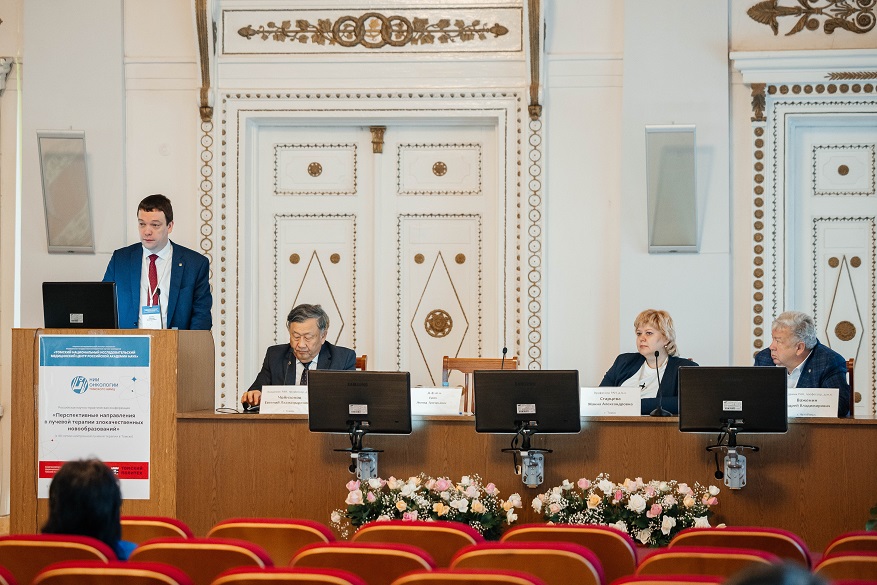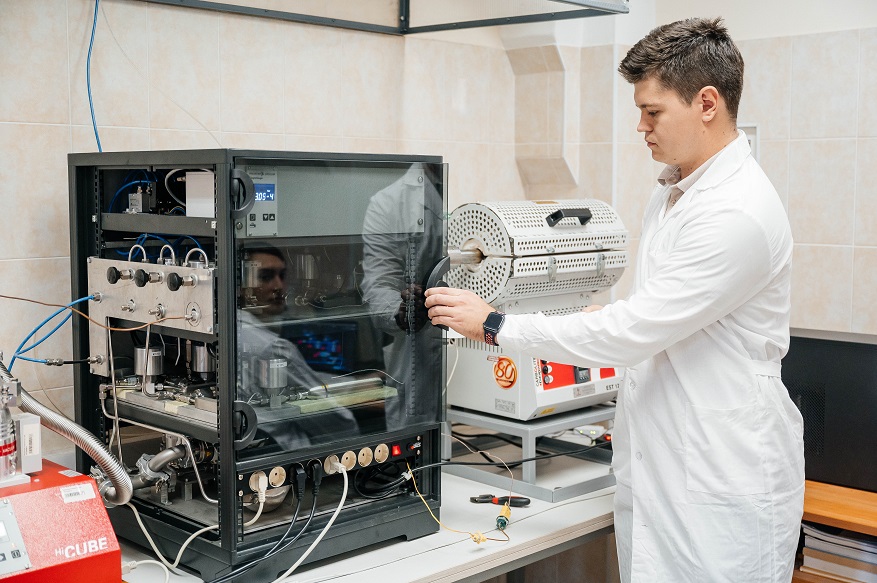Software for planning gamma-neutron therapy of malignant tumors developed by scientists of the Technological Reference Center for Ionizing Radiation in Radiology, Radiation Therapy and Nuclear Medicine of TPU and the Oncology Research Institute of Tomsk National Research Medical Center has been registered as intellectual property. The application allows medical physicists to more accurately calculate dose burden values when planning gamma neutron therapy of malignant tumors at the U-120 cyclotron, to optimize the distribution of absorbed dose in tissues and organs, and allows radiotherapists to assess potential risks and side effects for the patient. The development was supported by the Priority 2030 program of the Ministry of Education and Science.
The results of the work were presented at the Russian scientific and practical conference "Prospective Directions in Radiation Therapy of Malignant Neoplasms" on October 5 at the Tomsk Research Institute of Oncology. Tomsk Polytechnic University was a co-organizer of the event. As Leonid Sukhikh, acting rector of TPU, emphasized at the opening of the conference, Tomsk has a unique situation where universities, research institutes and clinical base are concentrated in one place and are closely connected.
"Neutron therapy should be considered not only as a method, but also as a system that is adopted in the entire radiation therapy system of the country. The next focus of our cooperation should be on transitioning from accumulating experience to practical mass implementation, using domestic technologies to successfully develop and apply neutron therapy," according to Leonid Sukhikh.
Improving treatment methods for oncological diseases is a top priority for modern medicine. Radiation therapy is a leading and highly effective approach in this field. The effectiveness of radiation therapy heavily relies on accurate calculation of absorbed dose distribution and proper use of therapeutic and auxiliary equipment.
Specialists from the TPU Technological Reference Center for Ionizing Radiation in Radiobiology, Radiation Therapy and Nuclear Medicine have designed and registered a software program for dosimetric planning in radiation therapy. This program streamlines the process of radiation therapy planning for both medical physicists and oncologists.
The software tool developed by the experts of Tomsk Polytechnic University allows to calculate dose burden values when performing dosimetric planning for gamma-neutron therapy. For this purpose, such parameters of dosimetric plans as the number of sessions, single dose per fraction, number of irradiation fields, neutron dose field characteristics, beam incidence angles, and coordinates of beam entry points are entered into the application in advance.
"The data on absorbed and isoeffective dose distributions obtained by the computer program allows for a more precise analysis of the correlation between various dose field characteristics and neutron therapy outcomes. Furthermore, the program enables calculation of not only the tumor dose but also the patient's skin surface and critical organs' healthy tissue and cell loads. Thus, computer simulation of radiation dose distribution enables the optimization of treatment processes while reducing the likelihood of complications and decline in the patient's quality of life. We have developed and registered the first specialized software in the country," says Ekaterina Selikhova, an engineer at the Technological Reference Center for Ionizing Radiation in Radiobiology, Radiation Therapy and Nuclear Medicine.
The software is versatile, suitable for deployment by all medical institutions offering neutron therapy.
Tomsk Polytechnic University intends to modernize the application. The plans include the development of an intuitive interface for users, the ability to visualize the patient's anatomical structures in 3D format, and the incorporation of advanced features for precise dose planning and evaluation of the dosimetric plan.



